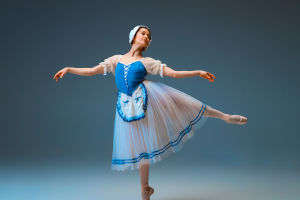Have you ever noticed how a simple dance can instantly lift your mood or calm your mind?
Dance isn't just an art form or entertainment—it's also a powerful therapeutic tool that can improve mental and physical well-being.
While many think of therapy as sitting quietly and talking, dance therapy taps into movement to unlock healing in ways words sometimes cannot.
In this article, we'll dive into how dance therapy works, why it's gaining traction in modern psychology, and how it benefits both mind and body. If you've ever wondered whether moving your body could help ease stress or depression, you might be surprised by what science and experts reveal.
What Is Dance Therapy?
Dance therapy, also called dance/movement therapy (DMT), uses expressive movement as a way to support emotional, cognitive, physical, and social integration. It's based on the idea that body and mind are deeply connected, and that movement can reflect and affect emotional states.
Unlike traditional talk therapy, dance therapy:
• Encourages clients to express feelings they may struggle to verbalize.
• Involves guided movement sessions led by trained therapists.
• Focuses on self-awareness, body connection, and emotional release.
This form of therapy is adaptable, used in group or individual sessions, and tailored to different needs—from anxiety relief to trauma recovery.
Why Dance Helps Mental Health
Movement triggers a cascade of positive effects in the brain and body, making dance an effective way to tackle psychological challenges.
Here's why dance therapy benefits mental well-being:
1. Reduces Anxiety and Stress: Rhythmic movement helps regulate breathing and heart rate, calming the nervous system.
2. Improves Mood: Physical activity releases endorphins—the body's natural "feel-good" chemicals.
3. Boosts Self-Confidence: Expressing emotions physically can strengthen self-esteem and personal identity.
4. Encourages Mind-Body Awareness: People learn to recognize physical sensations linked to emotions, helping them manage feelings better.
According to research published in the American Journal of Dance Therapy, participants showed significant improvements in mood and reductions in anxiety after just a few sessions. Dr. Christina Devereaux, licensed dance/movement therapist, noted that dance therapy helps people express emotions stored in the body in ways words cannot fully capture.
Physical Benefits Beyond Mental Health
Beyond emotional healing, dance therapy also provides physical health benefits such as:
• Enhanced Coordination and Balance: Movement sequences improve motor skills and body control.
• Increased Flexibility and Strength: Regular dance builds muscle tone and joint mobility.
• Improved Cardiovascular Health: Dancing raises the heart rate, promoting heart health and endurance.
• Pain Reduction: Some studies show dance can alleviate chronic pain by releasing tension and promoting relaxation.
For people recovering from injuries or living with chronic conditions, dance therapy offers a gentle yet effective way to stay active while supporting mental health.
Dance Therapy in Practice: Real-World Applications
Dance therapy has found a role in diverse settings, from hospitals and rehab centers to schools and community groups.
Examples of its use include:
• Supporting patients undergoing cancer treatment in coping with stress.
• Supporting veterans and trauma survivors in processing emotions nonverbally.
• Assisting children with developmental disorders to improve communication skills.
• Offering seniors a joyful way to maintain physical mobility and social connection.
Dr. Marian Chace, a pioneer in dance therapy, emphasized that movement and emotional expression play a central role in holistic health.
How You Can Experience Dance Therapy
You don't need to be a trained dancer to benefit from movement therapy. Many community centers and wellness clinics offer dance therapy classes or workshops. Even informal dancing at home or with friends can foster many of the same benefits if done mindfully.
To start exploring dance therapy on your own:
• Focus on movements that feel natural and expressive, not perfect or choreographed.
• Pay attention to how your body feels during and after movement.
• Allow yourself to release emotions through rhythm and flow.
• Consider guided sessions with a certified dance therapist for personalized support.
What if healing your mind and body could be as simple as moving to your favorite music? Dance therapy reminds us that movement is a language of healing, able to transform anxiety into calm and sadness into joy. Next time stress builds up, maybe all you need is to stand up, move, and let your body lead the way.
Would you be open to trying dance as a form of therapy? How might moving your body differently change the way you feel?

